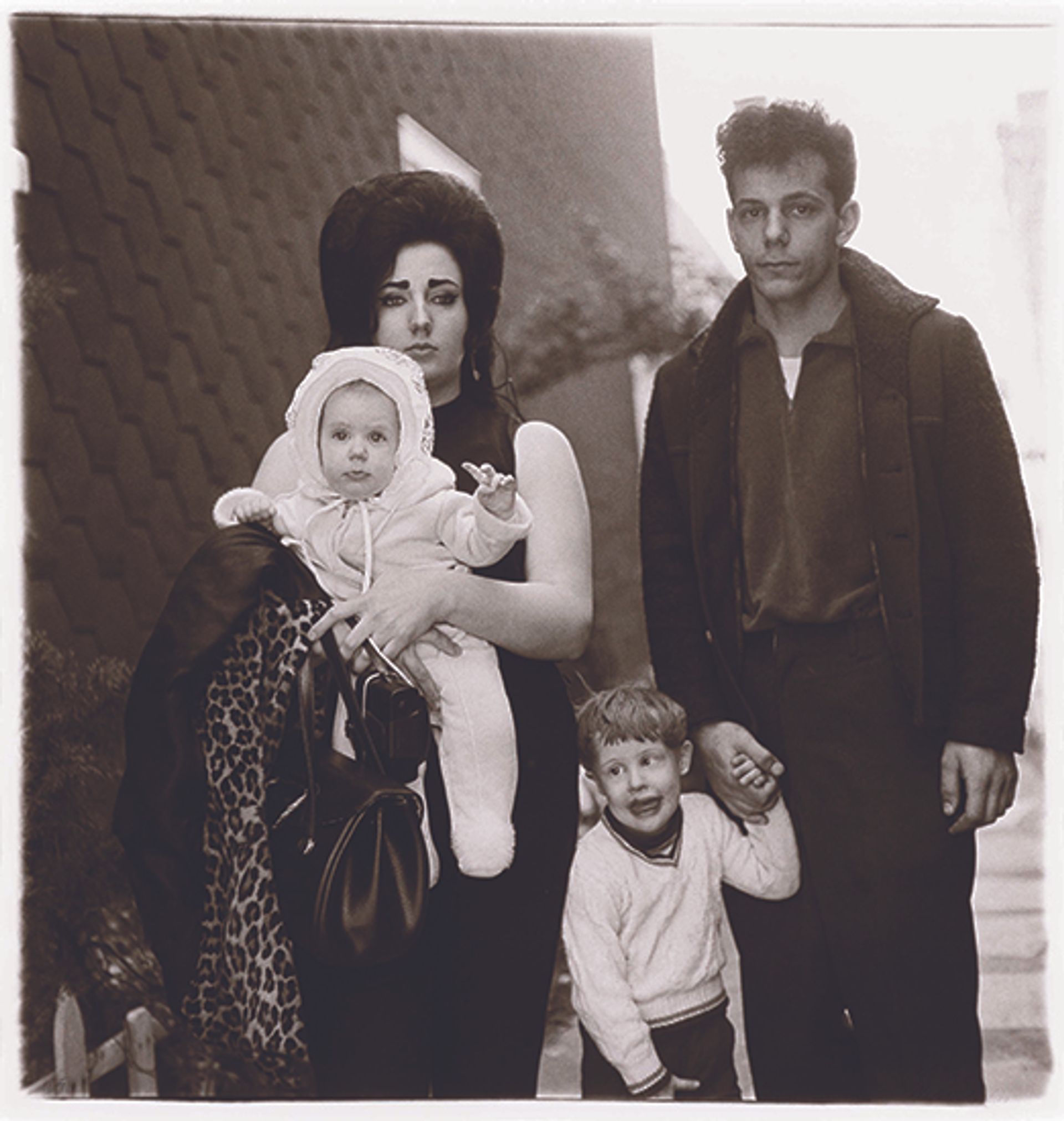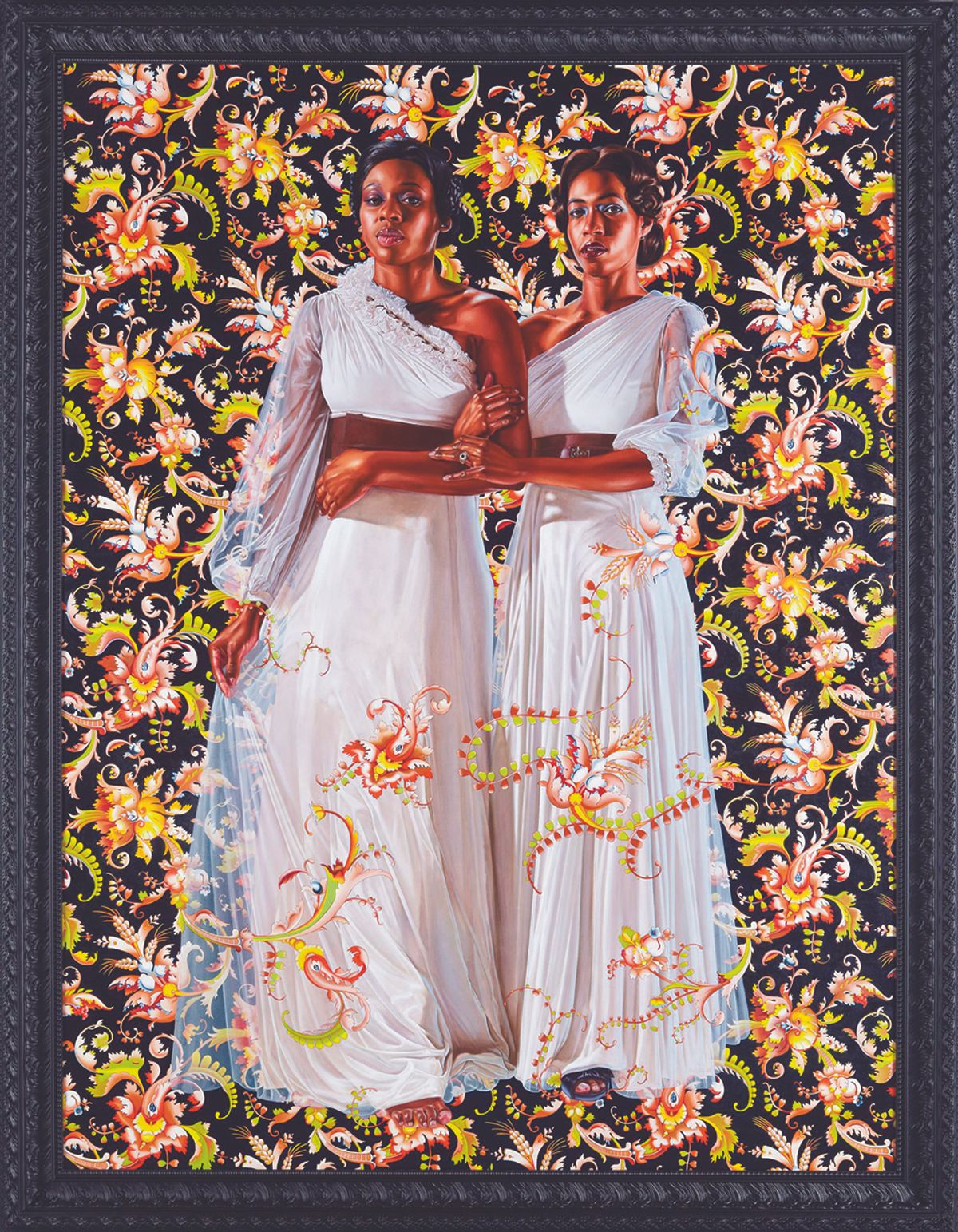Kehinde Wiley, The Two Sisters (2012)
Cincinnati Art Museum
Kehinde Wiley is known for his photorealistic portrayals of Black subjects in the grand manner of the European Old Masters—most notably US President Barack Obama for his official White House portrait. This almost 9ft-high portrait of two sisters—scouted by the artist from the streets of New York—forms part of An Economy of Grace, Wiley’s first series dedicated to women. The poses and costumes of the figures are inspired by historic female portraits at the Musée du Louvre in Paris, including Théodore Chassériau’s 1843 portrait of his sisters. Wiley toured the Parisian museum with the fashion designer Riccardo Tisci, who was tasked with creating bespoke neoclassical gowns for each sitter. The Two Sisters is now on view at the Cincinnati Art Museum, which acquired the painting with support from the Ragland family, whose interests include The Gorilla Glue Company.

Diane Arbus, A Young Brooklyn Family Going for a Sunday Outing, N.Y.C. (1966)
© Diane Arbus
Photographs from the Pilara Foundation
Glenstone, Potomac, Maryland
A visit to a Diane Arbus retrospective at the San Francisco Museum of Modern Art in 2003 so moved the philanthropists Andrew and Mary Pilara that they began collecting her work. The couple went on to acquire 4,000 photographs, but now the collection will be dispersed. The Pilara Foundation recently announced plans to close its non-profit gallery, Pier 24 Photography, in 2025, after the San Francisco Port Commission announced plans to triple the rent for the gallery’s home under the San Francisco Bay Bridge. Ahead of two sales with Sotheby’s New York in May, and with the help of Jeffrey Fraenkel of San Francisco’s Fraenkel Gallery, Maryland’s Glenstone museum has acquired from the foundation 112 images by ten noted photographers. They include a rare 1970 edition of Arbus’s unfinished portfolio, A box of ten photographs, as well as Hiroshi Sugimoto’s 24 ft-wide print of a waxwork diorama of Leonardo’s The Last Supper, which preserves the water damage wrought by Hurricane Sandy in 2012 as an “act of God”.

Harmen Hals’s A Merry Couple (1648)
Courtesy Lawrence Steigrad Fine Arts
Harmen Hals’s A Merry Couple (1648)
Frans Hals Museum, Haarlem
This Dutch Golden Age scene of flirtation entered the collection of the Philadelphia transportation magnate Peter Arrell Browne Widener in the late 1800s, when US collectors’ love of Dutch art was at its height. Bearing the monogram “H”, it was bought as a work by Frans Hals from the Dutch art dealer Leonardus Nardus, the son of a noted Utrecht antiques dealer, who also counted J.P. Morgan among his wealthy clients. By 1907, Widener suspected that Nardus had sold him questionable masterpieces—a suspicion confirmed by an array of experts. Fakes were returned to the dealer, while other pictures were sold on, including A Merry Couple. Eighty years later, the painting resurfaced on the market as the work of Harmen Hals, the eldest of Frans Hals’s five painter sons, who trained with his father. The work now joins the Frans Hals Museum as a genuine Harmen Hals, acquired from the Lawrence Steigrad Fine Arts dealership in New York.


